KIVI 43U710KB Android TV review: the best TV under 10 000 UAH
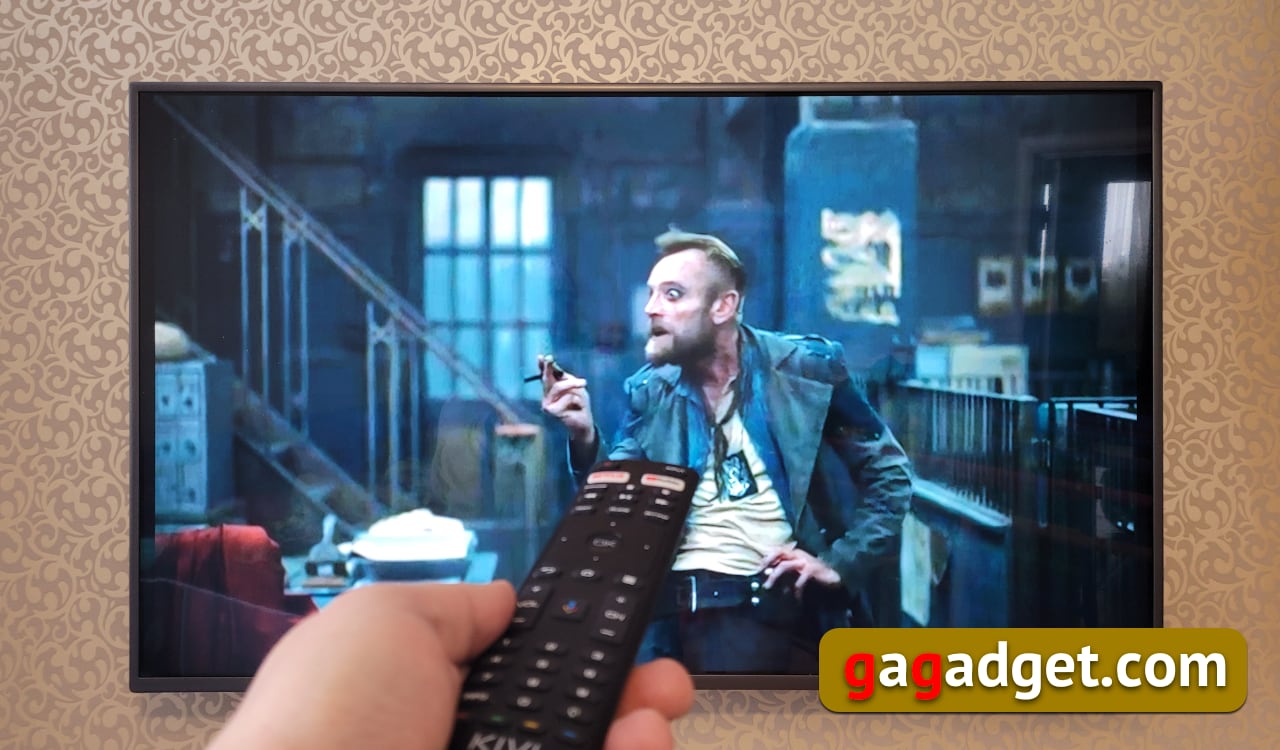
Thanks to Android, smart TVs have become mass-produced by dozens of companies. Today, most Chinese Android-smartphone manufacturers are going (or plan to go) into this segment, so the competition is, to put it mildly, high. In the price segment below 10,000 UAH, customers prefer to vote for Xiaomi. Because they know and trust the brand. And for Sony, Philips and Panasonic brands, which also have TV models based on Android TV, it is simply not interesting to operate in the ultrabudget segment. Generally, if we are focused on the purchase of an inexpensive and modern smart TV, it should be Android, with a resolution of 4K. And in the mass 43-inch option the best choice will be KIVI 43U710KB, which has in addition to Xiaomi as competitors except the model Ergo (brand owned by Foxtrot / South Contract), which emphasize the quality of its ADS matrix, replacing IPS. KIVI model is distinguished by the fact that its creators, as they say, went to great lengths with sound and image, adding support for HDMI 2.1 and supplementing HDR yet proprietary image processing algorithms, as well as working on the acoustics (its calibrated by 16 parameters and added high-frequency speakers and support for Dolby Digital).
KIVI 43U710KB against competitors
editorial recommends
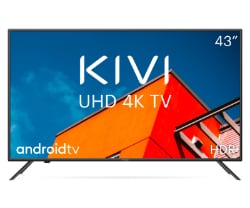
|
KIVI 43U710KB
|
Learn the price |
bestseller
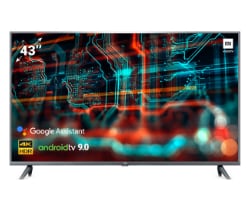 |
Xiaomi Mi LED TV 4S 43"
|
Learn the price |
good matrix
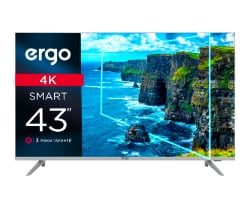 |
Ergo 43DUS7000
|
Learn the price |
3 reasons to buy KIVI 43U710KB TV:
- the original Google-controlled version of Android TV, with voice assistant and Chromecast support and an upgrade to version 11;
- advanced picture settings with one-button access from the remote;
- best-in-class sound.
3 reasons not to buy TV KIVI 43U710KB:
- you need the diagonal more than 43 inches;
- you think that paying extra for better sound and better picture makes no sense;
- no need for smart TV or choose Android.
What's interesting about the KIVI 43U710KB TV
It's worth saying that TVs in the budget segment really don't differ much from each other (just like budget smartphones, for example). All of them are designed for displaying video images, so the main visual difference is the screen diagonal. Externally all televisions look similarly boring - it is a rectangle with frames constantly tending to reduce the thickness, but for televisions of the same year of production this indicator is more or less the same. The differences begin when we think about buying a smart TV. Such TVs are distinguished by their ability to work with Internet services for music and video playback. Accordingly, they require an internet connection and have the ability to install relevant applications. All smart TVs can connect via Etherrnet cable and Wi-Fi, the only difference is whether the second 5 GHz band is supported and which Wi-Fi version is used. And here the work with the applications is the parafia of the operating system, and here the differences begin.

The global leaders in TVs - Samsung and LG use their own systems: Tizen and WebOS, which limits the choice of applications (in fact, apart from pre-installed video services there is nothing else useful). Which opens up space for all other manufacturers to quickly master Android. We have a separate article on the benefits of Android TV, there is no point in repeating everything here for the hundredth time. It is important to know that there are two versions of Android for TVs. The first is part of the AOSP (Android Open Source Project) and allows developers to do whatever they want: create their own shells and fill them with their own services. At the same time the question of Android updates is in full conscience of the developers, and after each release of a new version they have to redo a lot. The original version of Android TV is created by Google developers themselves, so TVs on this system are updated predictably and with a guarantee of stable operation. We have to pay for this with a unified interface (the interface of all TV manufacturers looks the same), which is difficult to call a disadvantage for the user. So KIVI 43U710KB runs exactly on Android TV version 9 and the manufacturer promises upgrading to version 11, bypassing version 10.
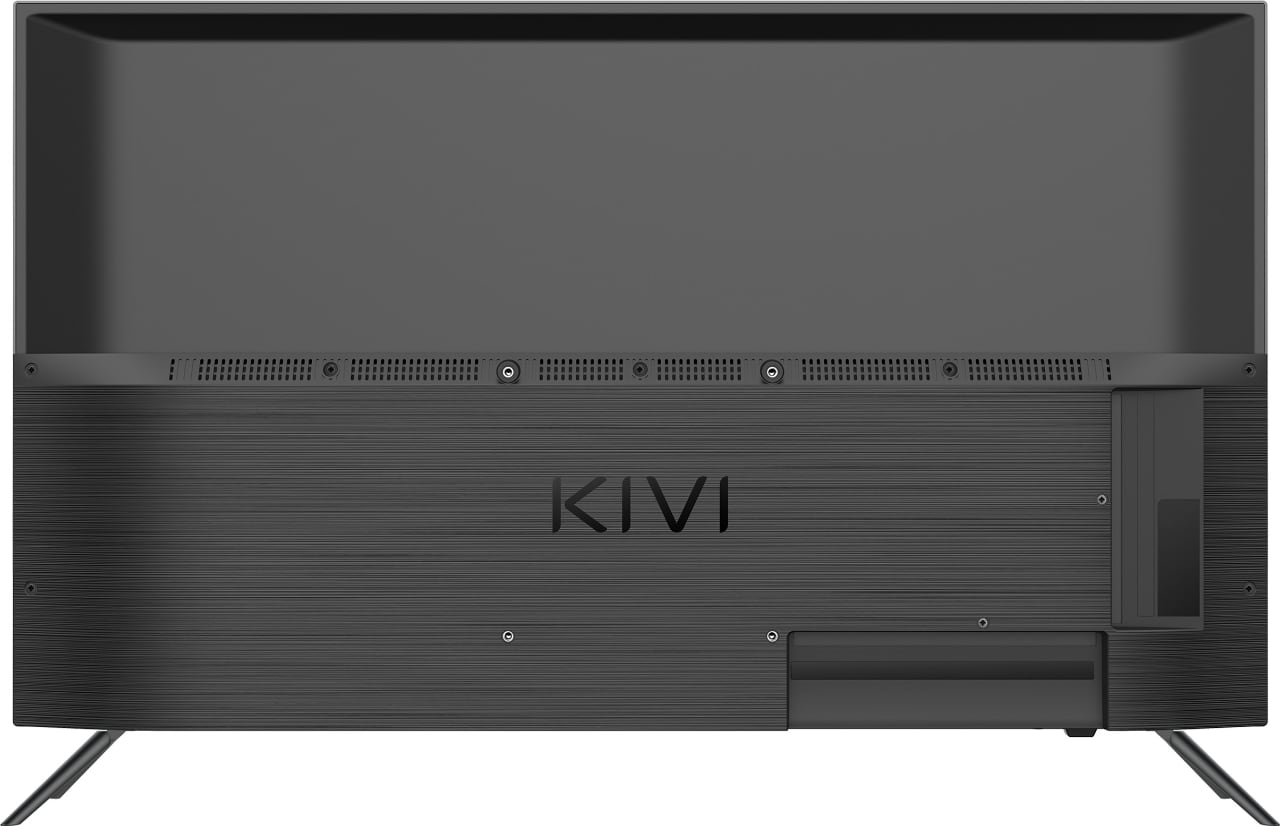
KIVI 43U710KB TV: Back view (rendering)
It is worth mentioning Chromecast support which is not present in all Android TVs. For those who are not aware - it is the ability to send a picture from your phone (or Chrome browser on your computer) to the TV. Doesn't work in all apps, of course, but in YouTube, for example, it does. Facebook videos can be sent to the TV, too. And things aren't so simple with Google Assistant support even if it is, as in this TV, claimed. Officially, Google Assistant does not yet work in Ukraine. This means that it understands Russian, perfectly recognizes voice queries (in Ukrainian too), but things will be even more interesting when it is officially launched. But even now it's possible to ask Google questions with your voice and control your home appliances with Google Assistant support (who has it). It looks like this:
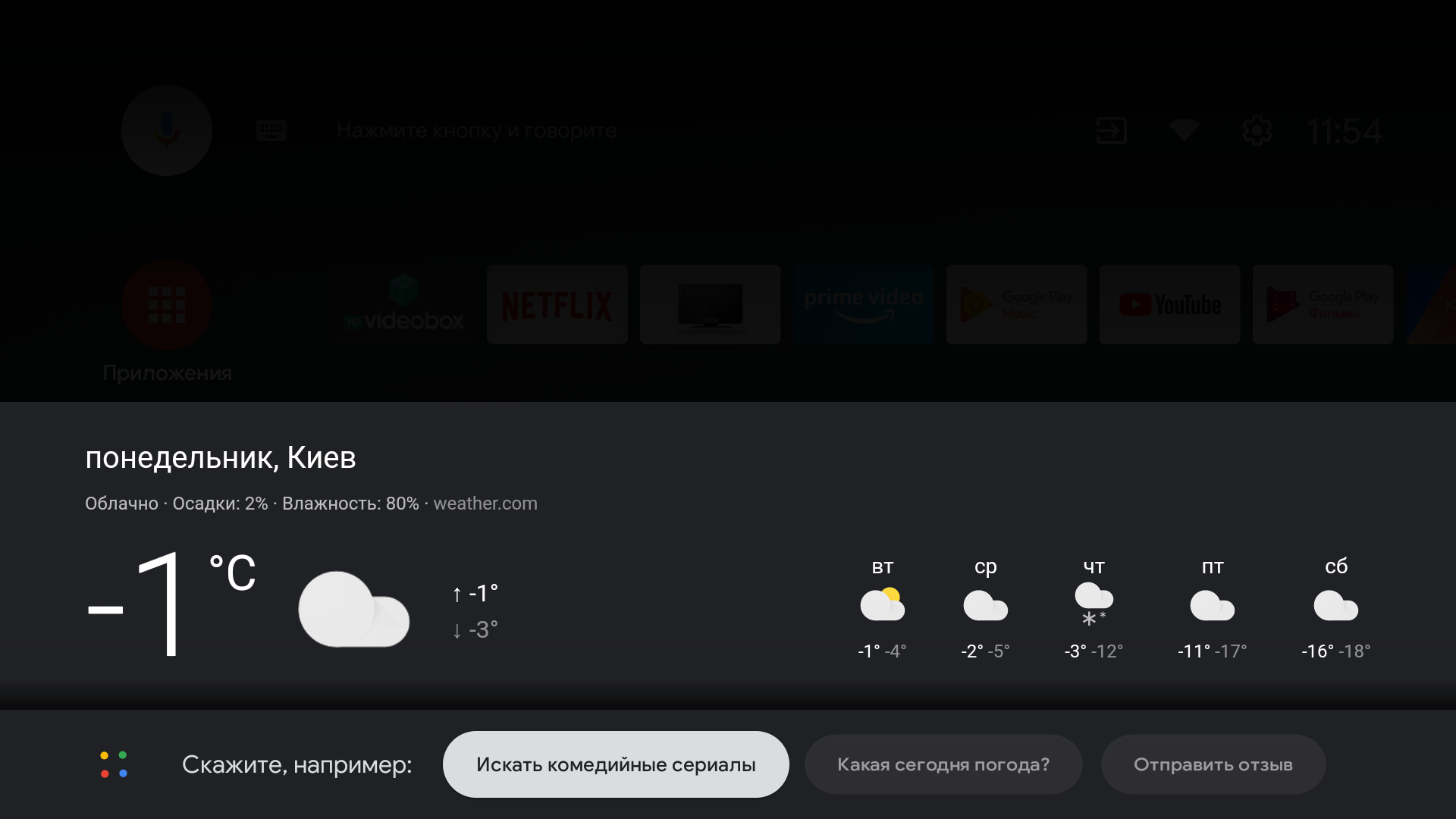
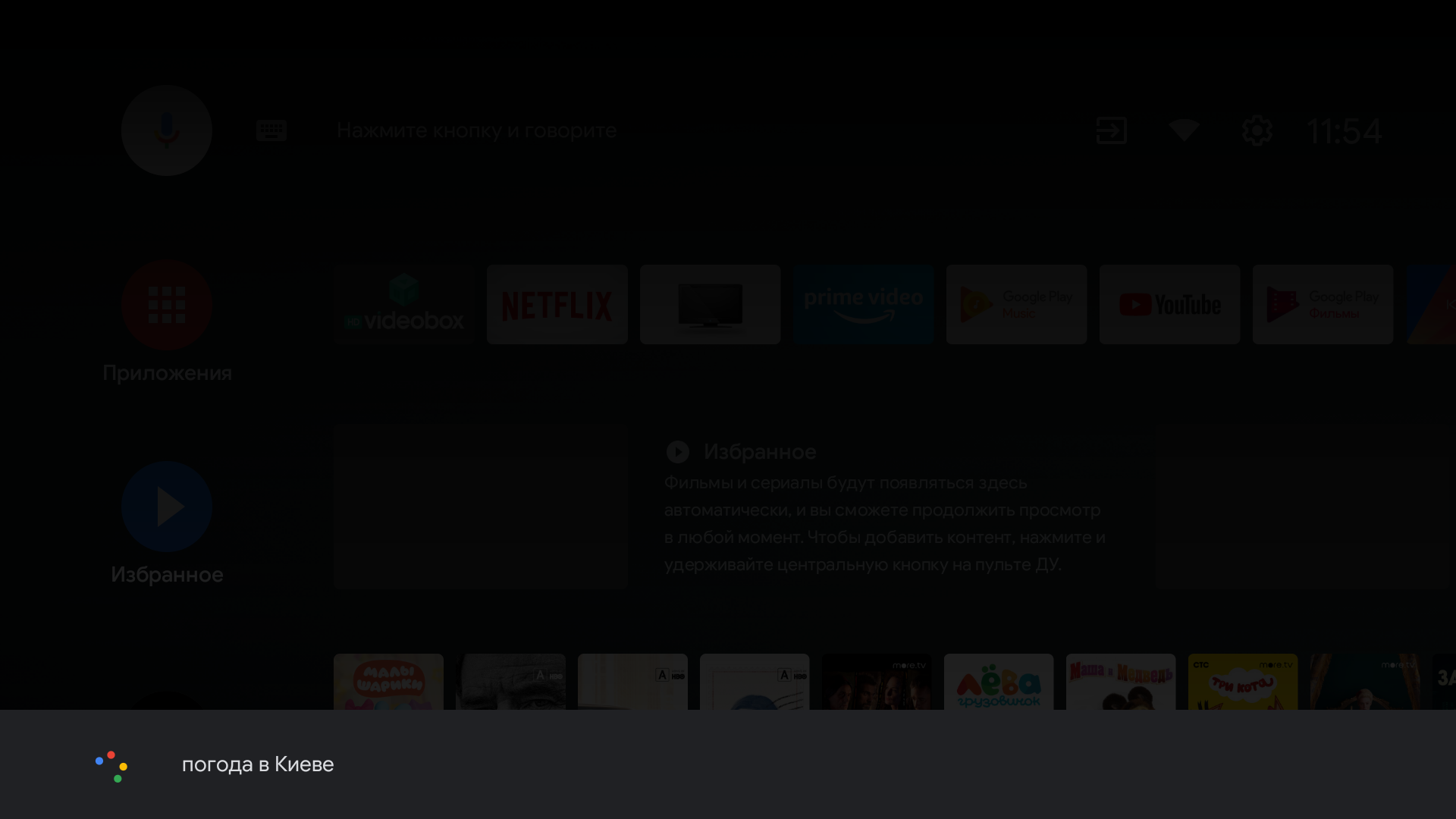
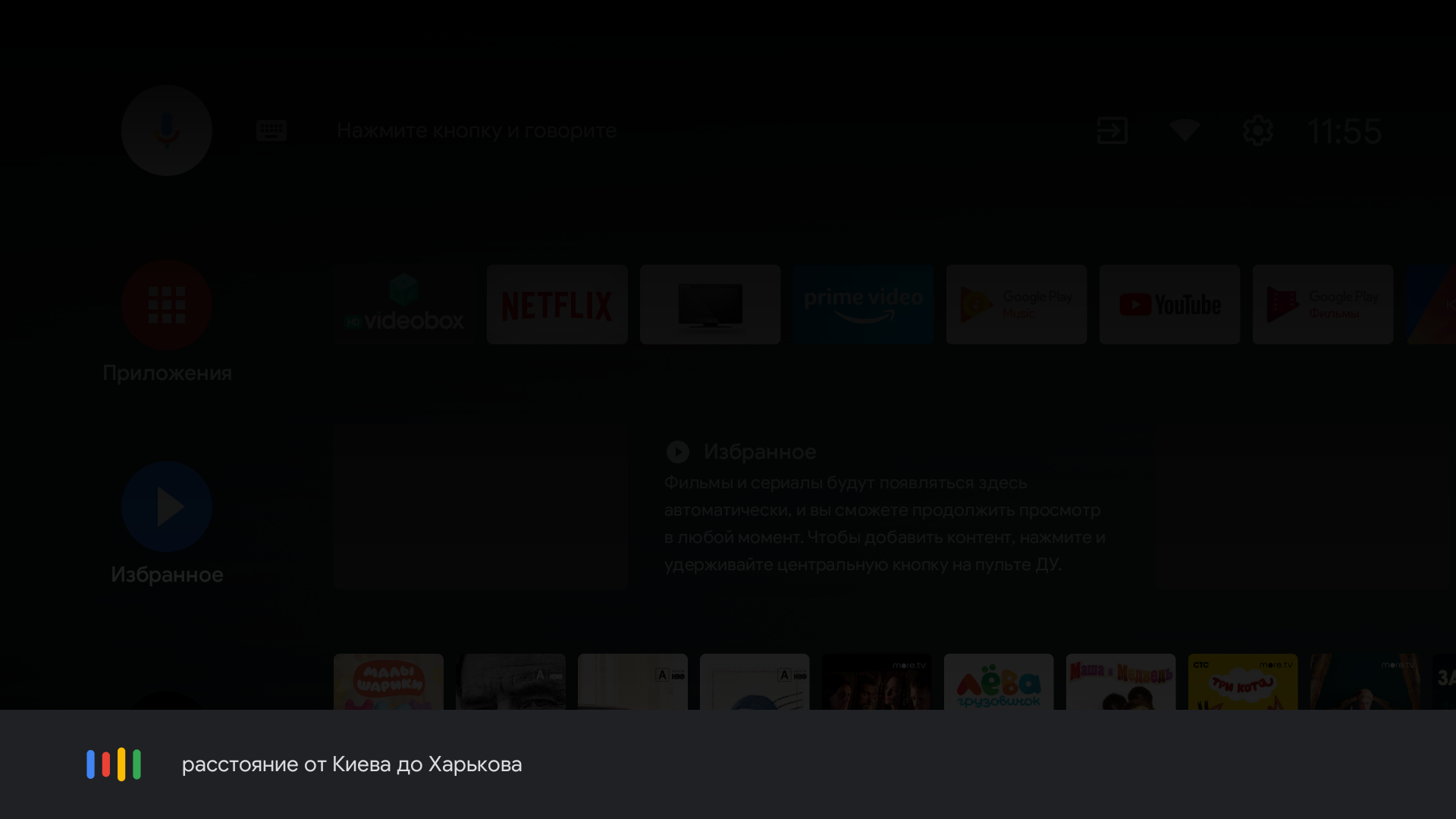

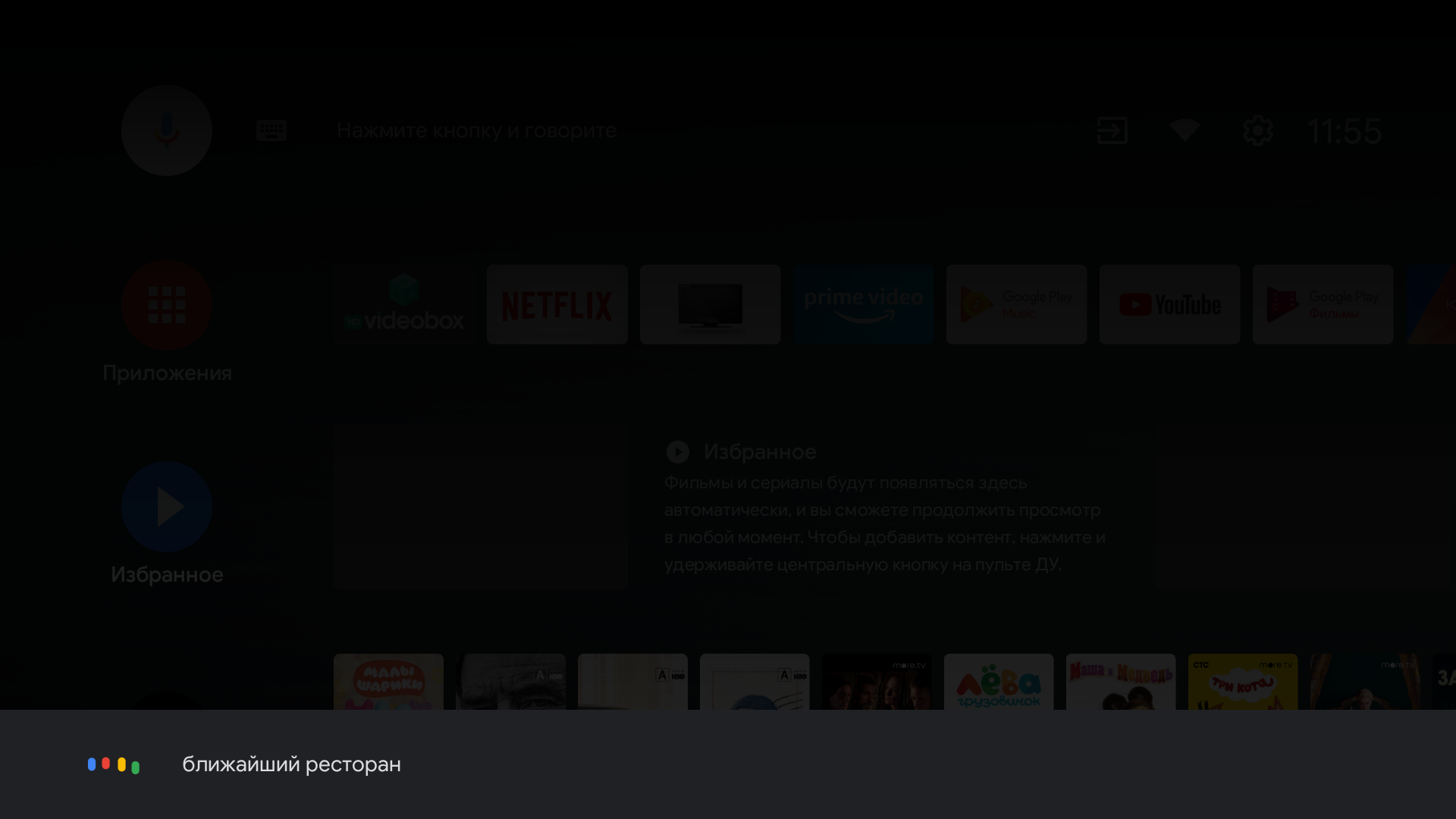
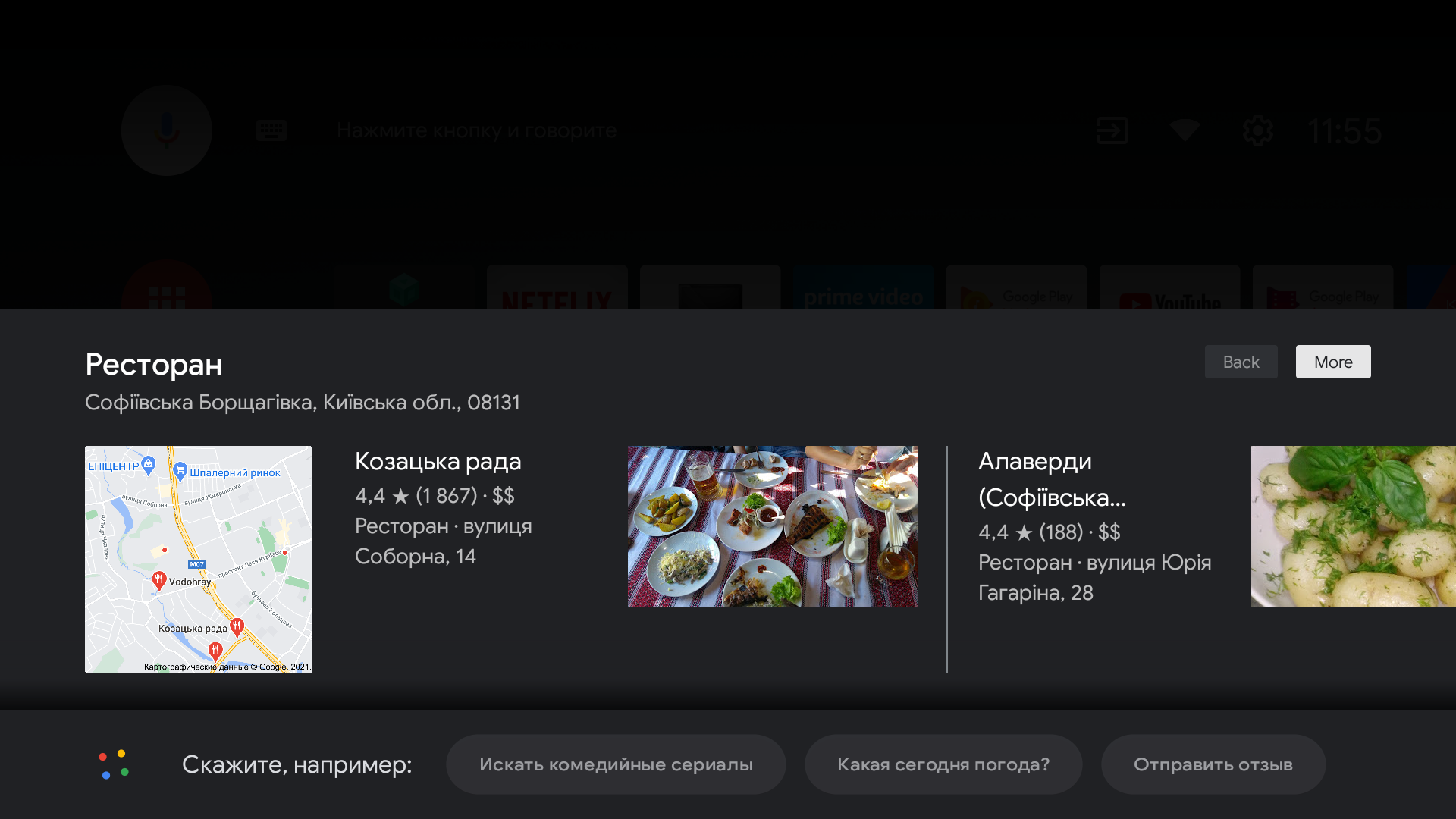
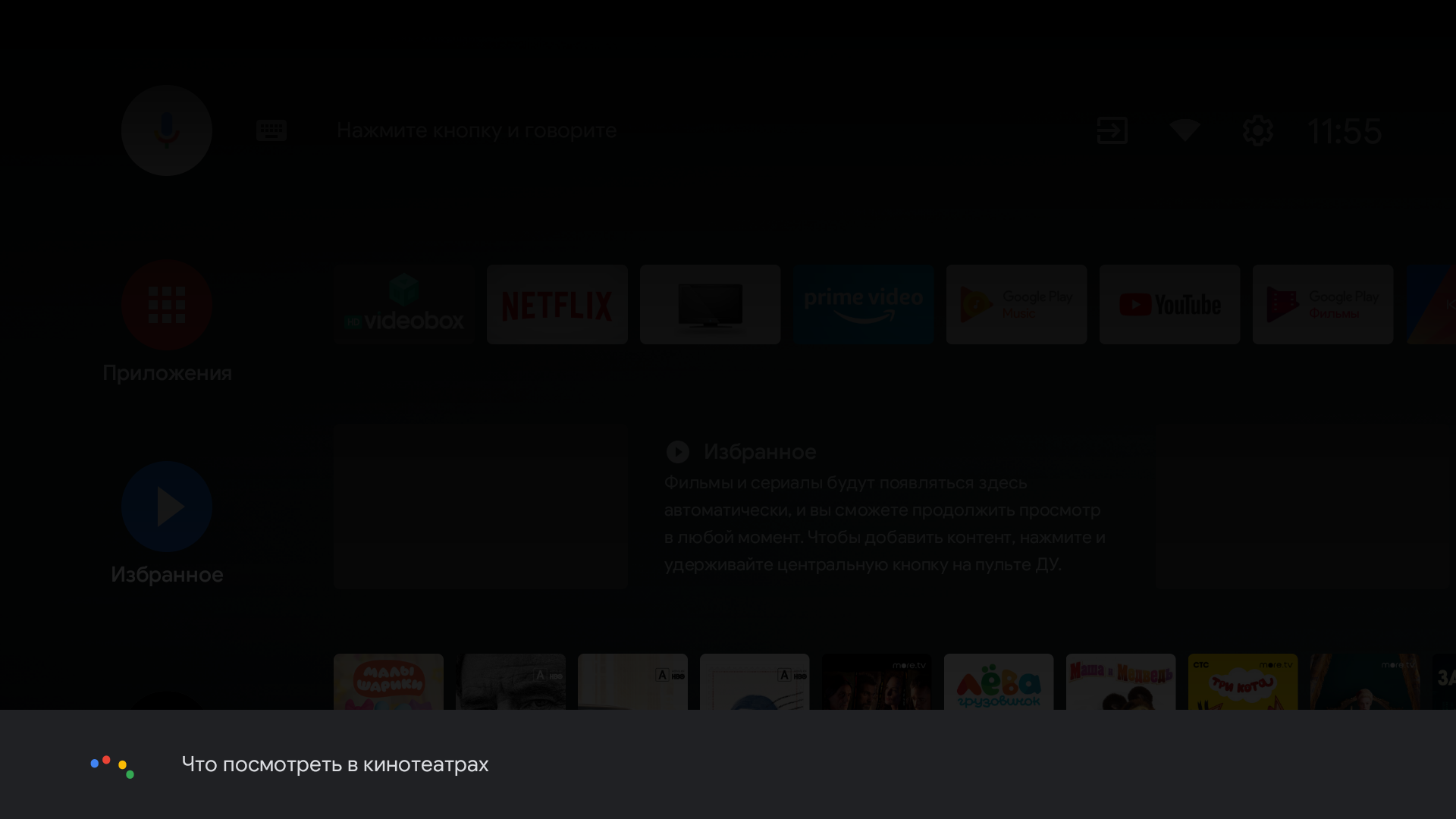
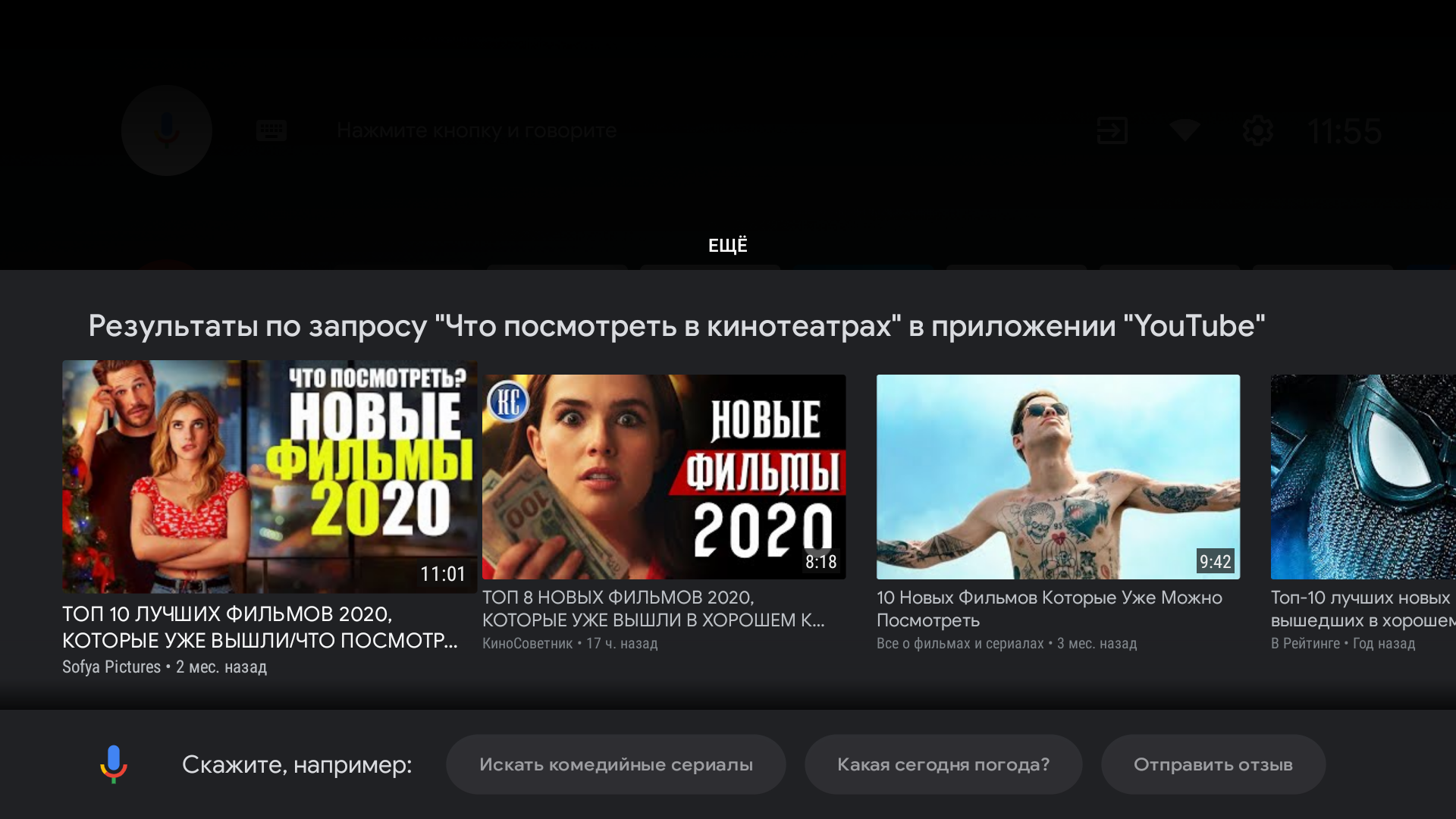
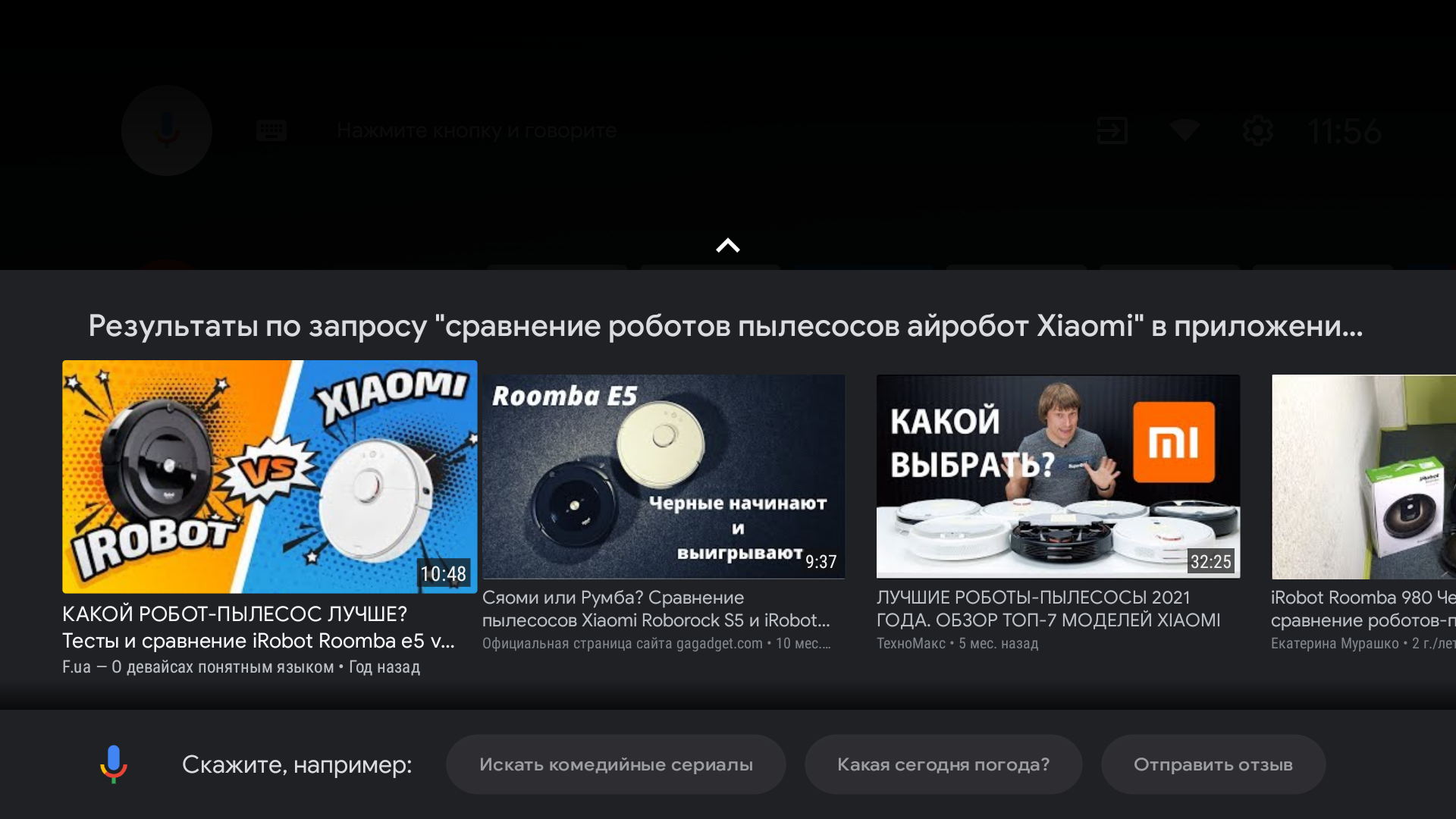
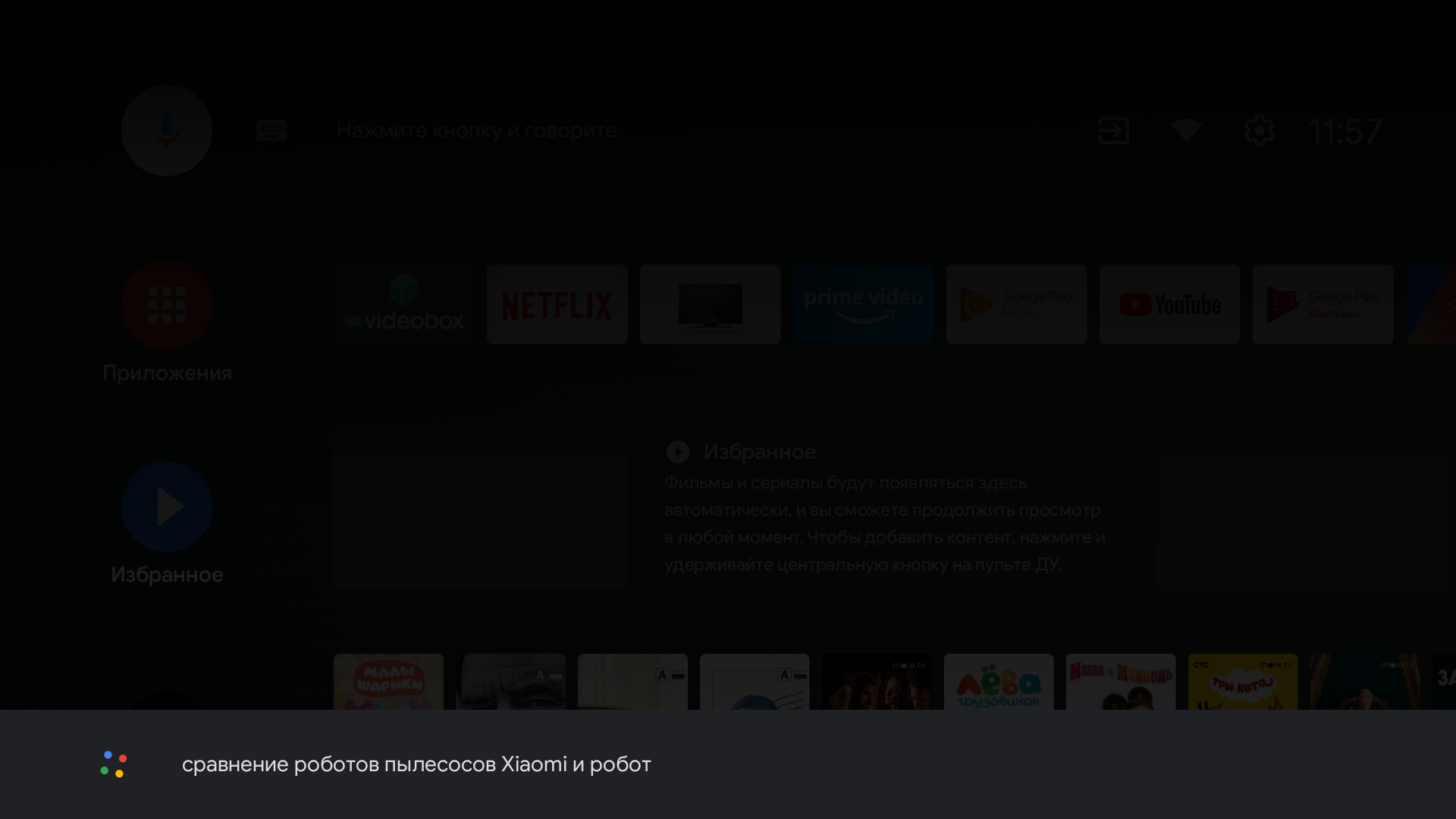

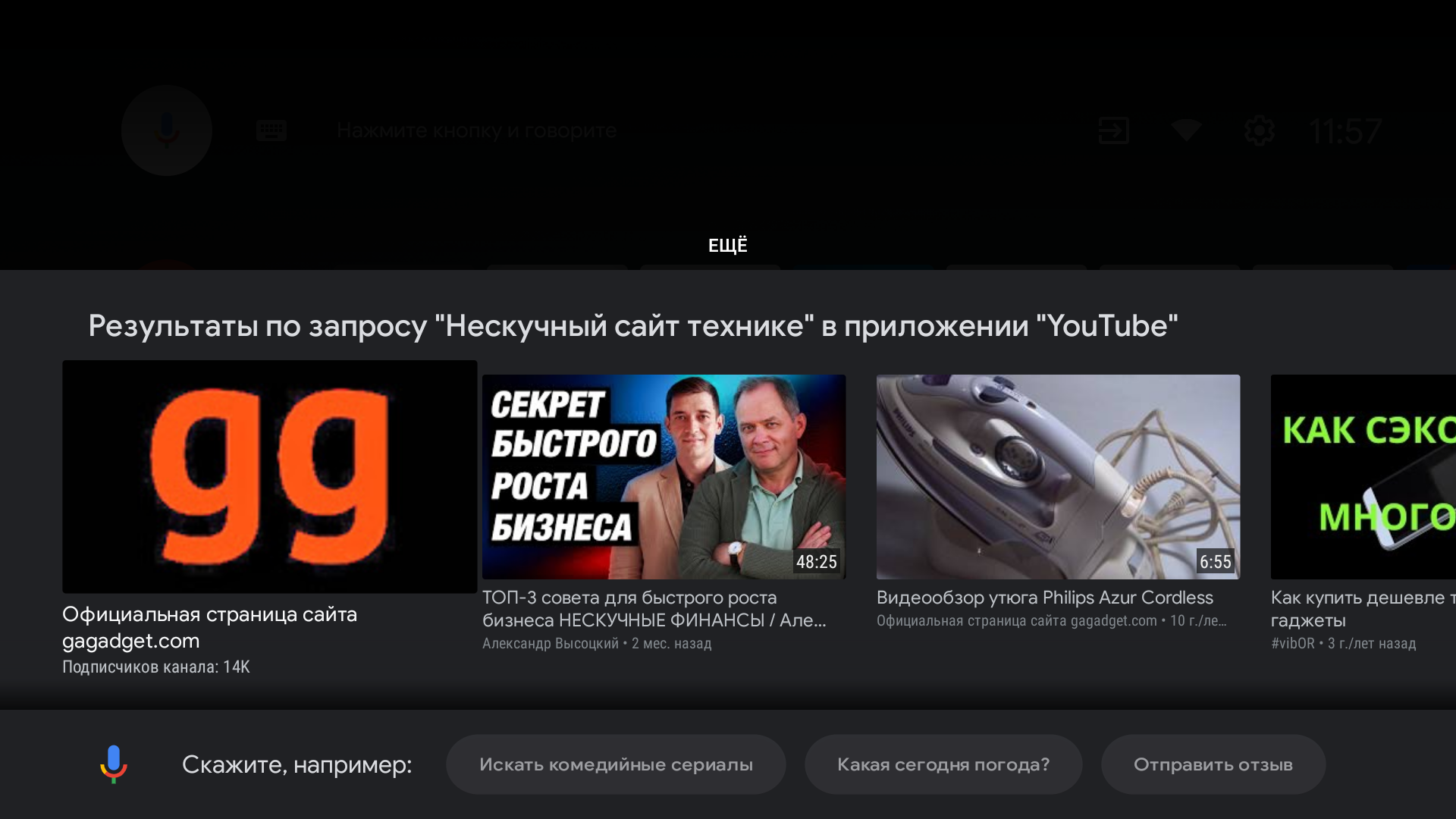
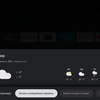







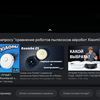



Another difference of KIVI 43U710KB is that its developers are familiar with the domestic consumer (you can read about it in the interview with KIVI CEO), so they added image processing algorithms into U710 series TVs, as well as worked separately with the sound. It is worth saying that all these algorithms and technologies are designed to improve the picture and work with smooth image transitions and color gradation smoothing (KIVI calls this algorithm UltraClear), smoothing jerkiness when watching streaming video (Motion Estimation Motion Compensation or MEMC), and automatic contrast enhancement in local image areas (Super contrast control). We worked separately with the sound. The speakers are calibrated to 16 parameters, and their power, thanks to additional tweeters, was increased to 12 watts each. We've also written about all this in a separate article.
And how does it all work in practice?
Generally, in this price segment determining the difference by eye is a non-trivial task. Of course, at the heart of a good picture is the matrix technology. There are not just a lot of them, but a lot of them, though all of them work with liquid crystal screens in one way or another. The technological breakthrough happened after the transition from cathode lamps to LED backlighting, then there was a difference between the placement of LEDs - in the budget models they were placed along the perimeter of the panel, but now there are no such options, the LEDs are behind the panel, providing better contrast and reducing glare at the edges. Taking into account the matrix technologies which are improved every year it is difficult to distinguish by eye the next IPS matrix variety from the new generation matrix PVA, and it is doubtful that the buyer of such TV will bother with it. It is important to understand the principle: the later the TV is released, the better the picture is due to the next-generation screen technology. New technologies are improved literally every year, but to explain the difference between them you need to go into deep physics of the processes surrounding the liquid crystal, which is not interesting for today's buyer. Subjectively the picture is good, and, taking into account the price tag, even excellent. Frankly bribe advanced image control features. Especially the color adjustment by 7 instead of 3 colors - there is a place to turn around amateurs to bring the picture to perfection.
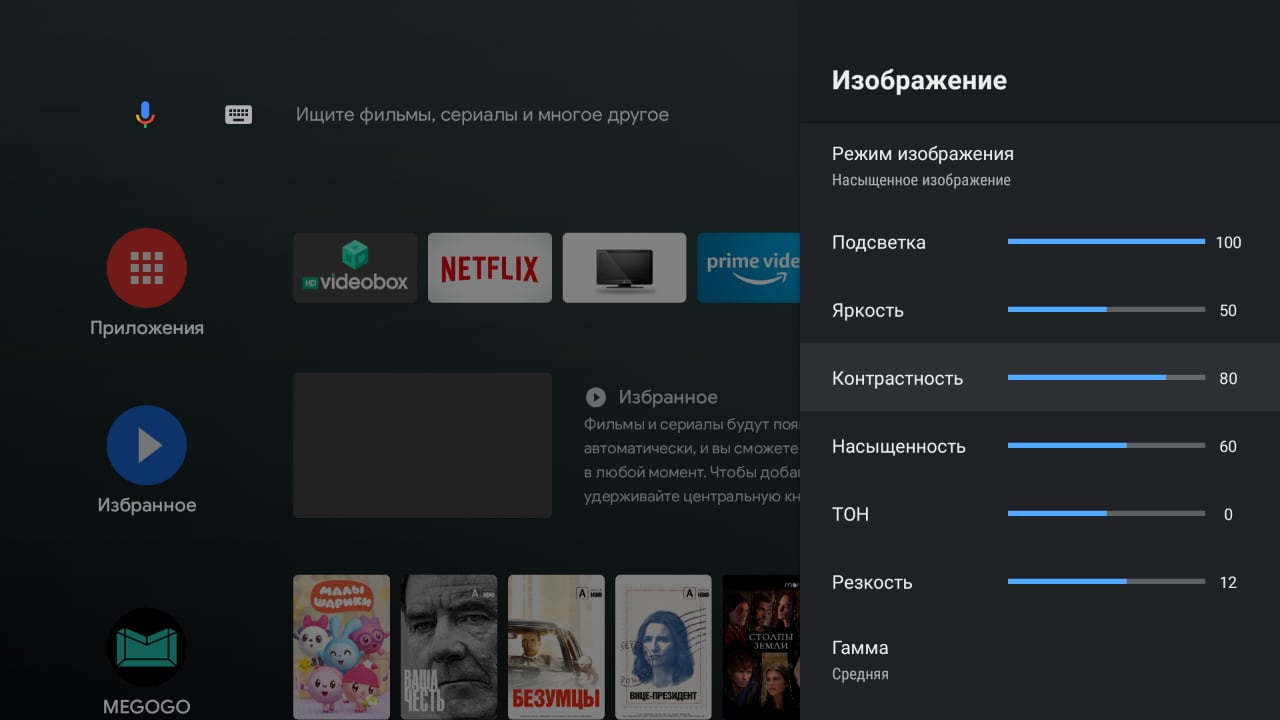
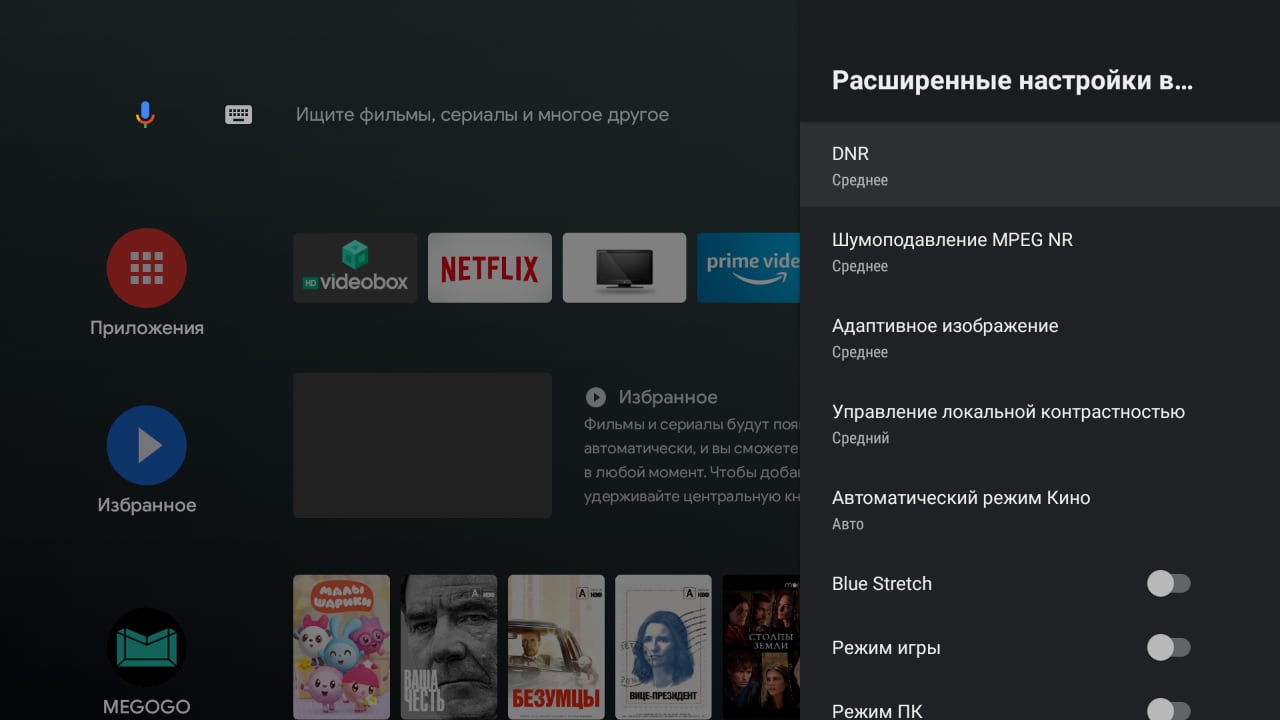
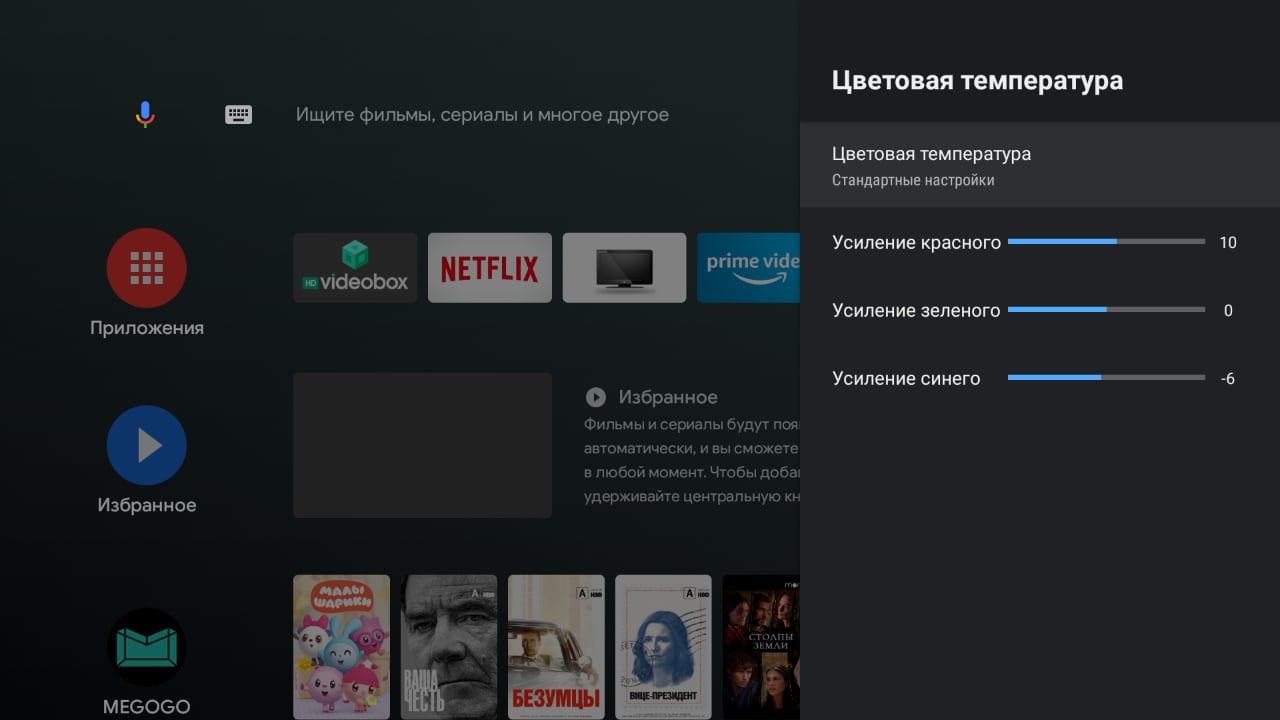

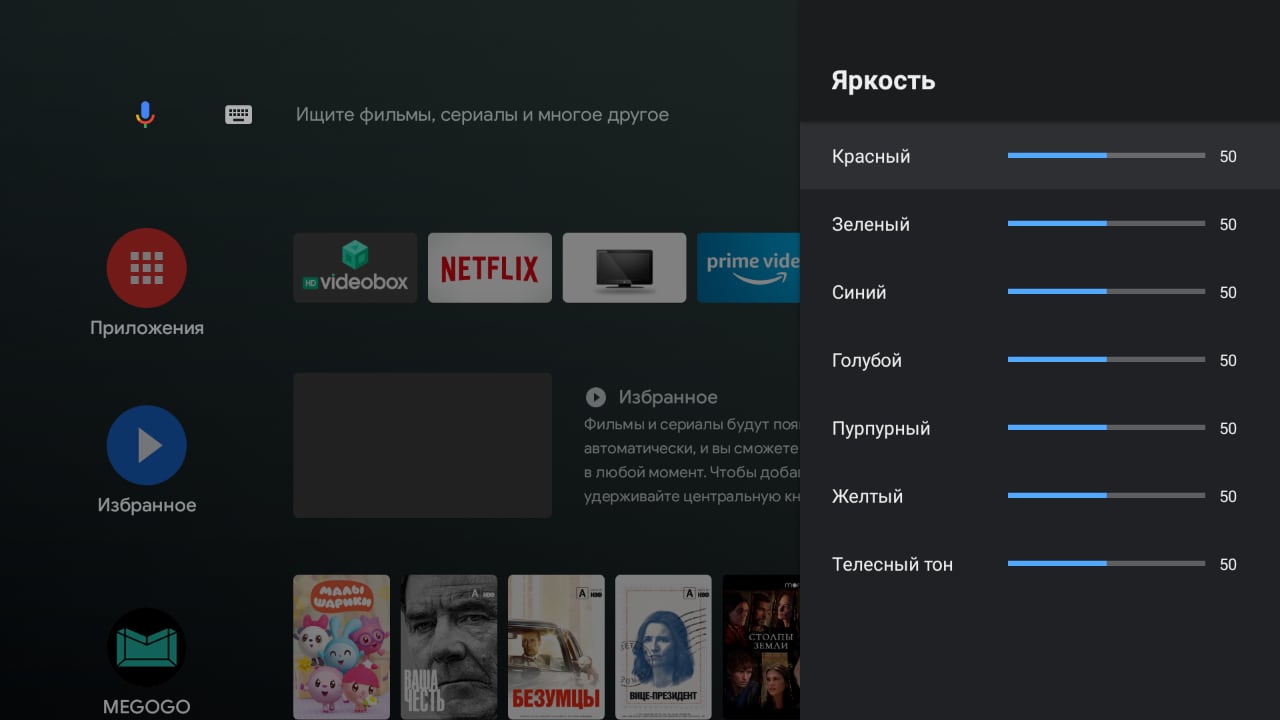





And Android TV users will also appreciate the ability to quickly access the settings with the remote control while watching a movie. No need to go to the main menu of the TV, then there will be several transitions through the settings to get to the right item.

In terms of sound, subjectively everything sounds good, I don't mean the lack of rattling at high volume - that's a given. I'm generally amazed at the sound capabilities of TVs lately, but usually we review TVs in more expensive price segments, and here we're talking about a model in a different price class. Therefore, the results seem to exceed expectations.
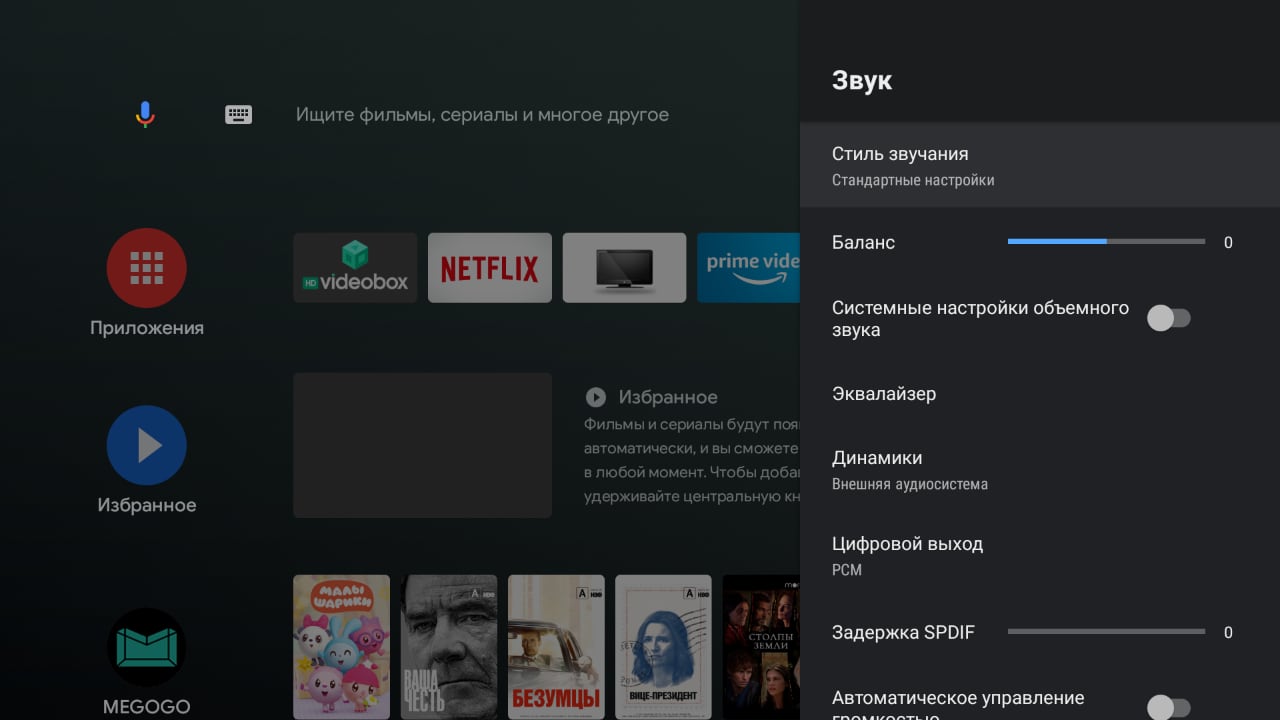
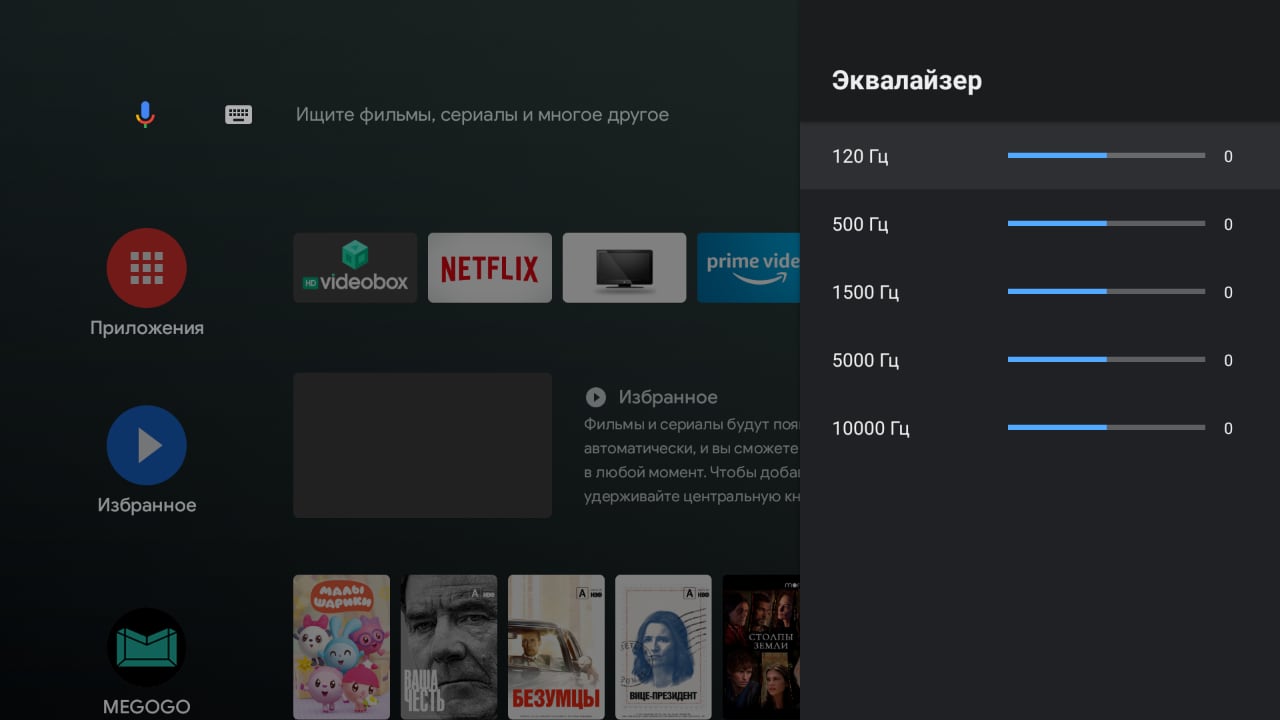
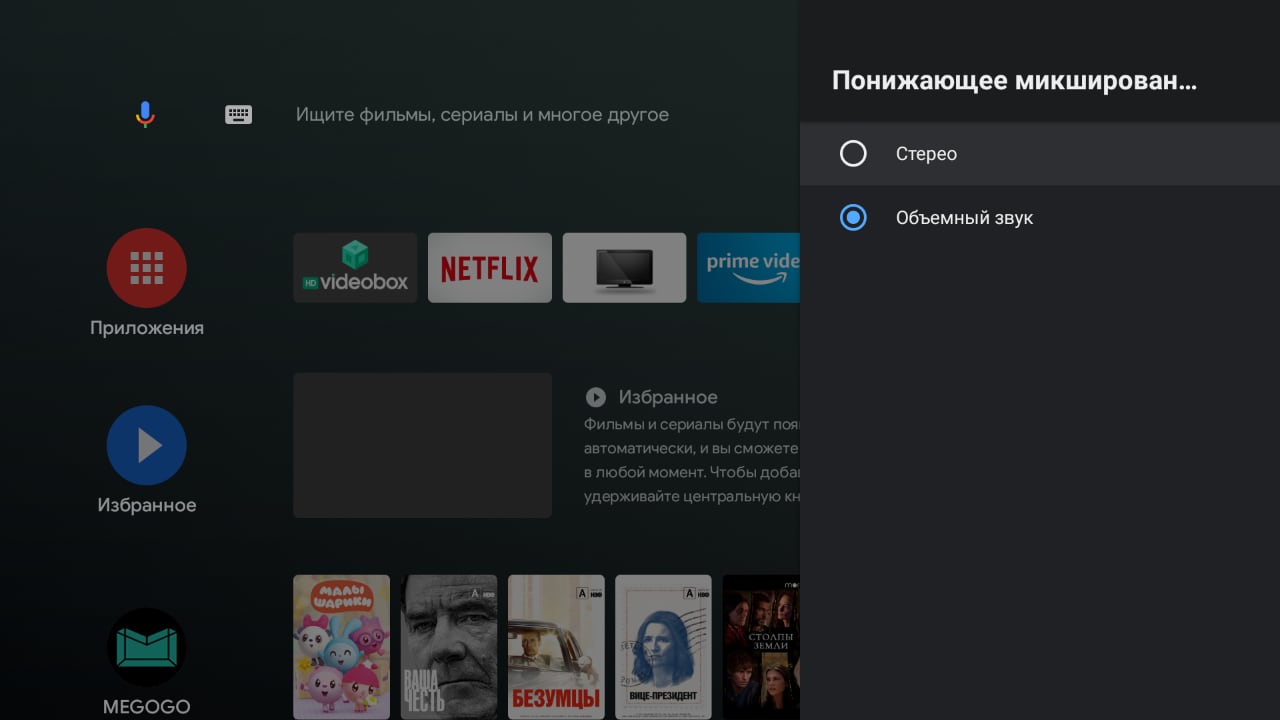
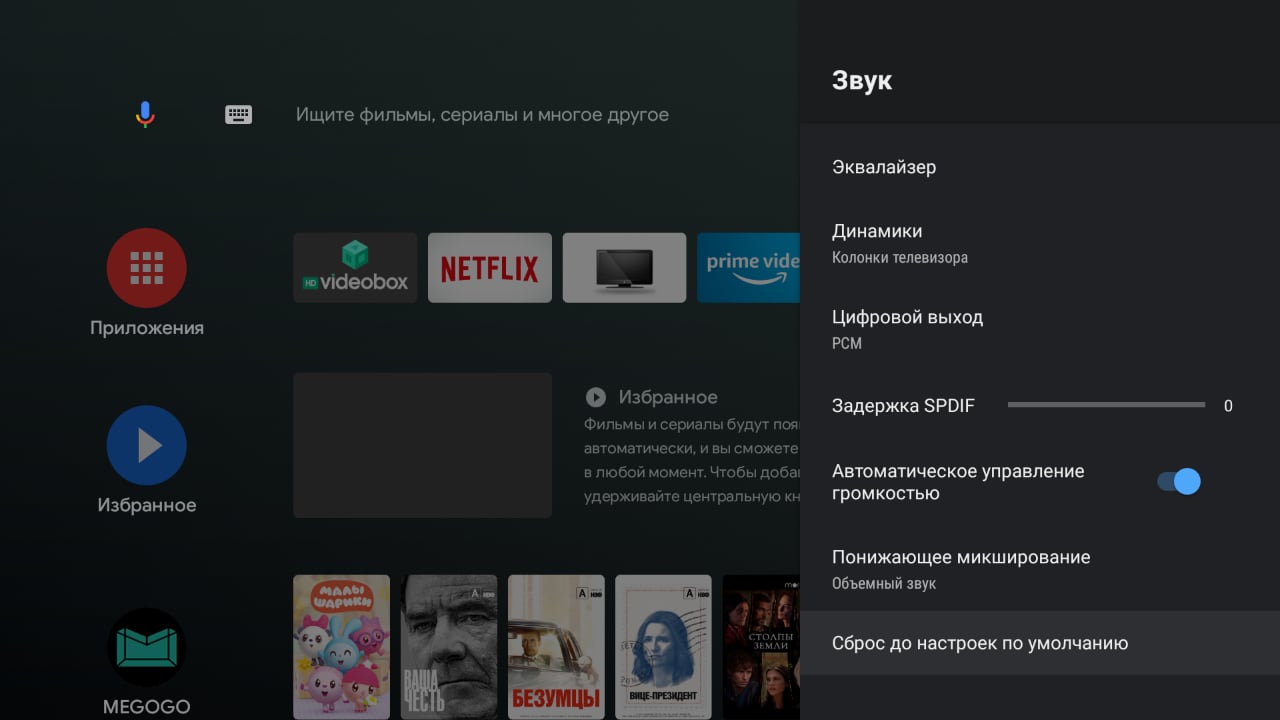




The secret of the sound lies in the speaker arrangement of this TV. They are mounted in a separate enclosure, which has found a place for the high-frequency "squeakers". The holes in the centre act as a phase-inverter.

In comparison with Xiaomi's bestseller there are open-type speakers (there is always an economy behind a low price). Actually, all this explains the difference in both price and results.
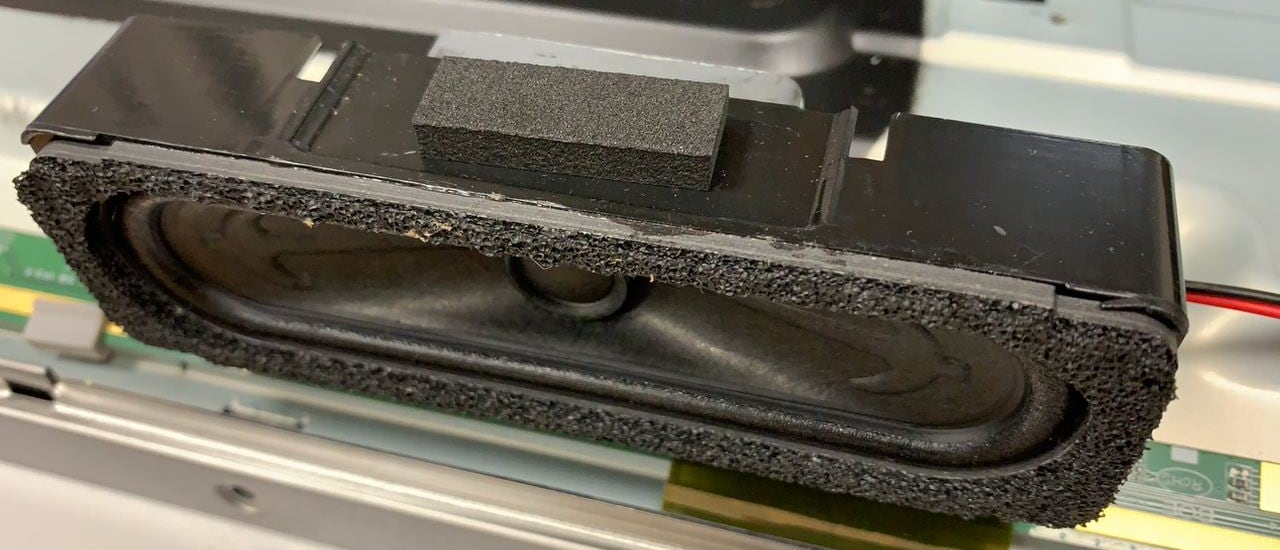
Why 43 inches in particular? What other options are there?
According to vice-president of KIVI the most popular among Ukrainian buyers are panels with a diagonal of 43 inches and 4K resolution. All this is easily explained by the fact that these panels fit into the psychological price threshold of 10 000 hryvnias. But still the feeling remains that we are dealing with a variant of self-fulfilling prophecy, and what of this is the cause and what is the consequence - KIVI focuses on 43" panels, because they sell better or they sell better because the manufacturer has deliberately made these very models attractive by features and price - difficult to understand. In addition to the 43-inch model, the U710 series includes 40-, 50-, 55- and 65-inch TVs. They differ, of course, by panel size and weight. The feet of the entire series of these TVs are small (by the way, you don't need a screwdriver to screw them in - an allen key is included) and add 200-300 grams of weight and about 6 cm in height. Inside, the electronics are the same, only the 40-inch model has 2x8 speaker power instead of 2x12 watts. And the older diagonals have different VESA mounting - 400x200mm instead of 200x200mm for the 43" model and 200x100mm for the 40".
| Model | 40U710KB | 43U710KB | 50U710KB | 55U710KB | 65U710KB |
|---|---|---|---|---|---|
| Dimensions without stand | 912x530x65 mm | 966x560x64 mm | 1123x650x62 mm | 1238x715x61 mm | 1455x837x64 mm |
| Weight without stand | 6 kg | 7.5 kg | 10.7 kg | 12.5 kg | 18 kg |
| Price | 9 499 UAH | 9 999 UAH | 12 199 UAH | 13 999 UAH | 17 999 UAH |
If you look at other 43-inch KIVI TV models in neighboring ranges, there are two 2019 models: 43U700GU and 43U800BU. They feature a slightly faster matrix (6ms vs. 8 on the KIVI 43U710KB), slightly more RAM - 2GB vs.5 GB (by the way, unlike KIVI 43U710KB they work on the Android version of AOSP, that is why for the reviewed TV set where everything is optimized according to the Google technical documentation it is not crucial), and the senior model 43U800BU has two times bigger built-in storage capacity (16 GB, not 8 GB as for all other models). These two models are also covered by a 3-year warranty. Whereas the newer 43U710KB model has a slightly modified warranty agreement: a one-year warranty on the TV and a three-year warranty on the display unit, which represents around 70% of the value of the entire TV. The 43U600KD is from 2020 and is a junior model to the 43U710KB: it has 2x10 watt speakers rather than 2x12, but the biggest difference is that it, like the 2019 models, runs on a proprietary build of Android TV rather than the original version.
| Model | 43U710KB | 43U600KD | 43U700GU | 43U800BU |
|---|---|---|---|---|
| Dimensions without stand | 966x560x64 mm | 966x560x65 mm | 966x560x65 mm | 966x560x65 mm |
| Weight without stand | 7.5kg | 7.4kg | 7.41kg | 7.41 kg |
| Price | 9 999 UAH | 8 999 UAH | 7 999 UAH | 9 999 UAH |
Remote control
The remote control has a separate button to run the Netflix application - it always comes paired with the officially pre-installed service application in the TV. And a separate settings button (Settings, allowing you to adjust the sound and picture settings directly while watching a movie and, therefore, immediately see the results). The cover for access to change the batteries is made for the whole back panel and the opening process resembles the similar procedure with the Nokia button phones. In addition, a built-in microphone allows you to transmit voice commands to the TV. And that's apparently all you need to know about this remote.

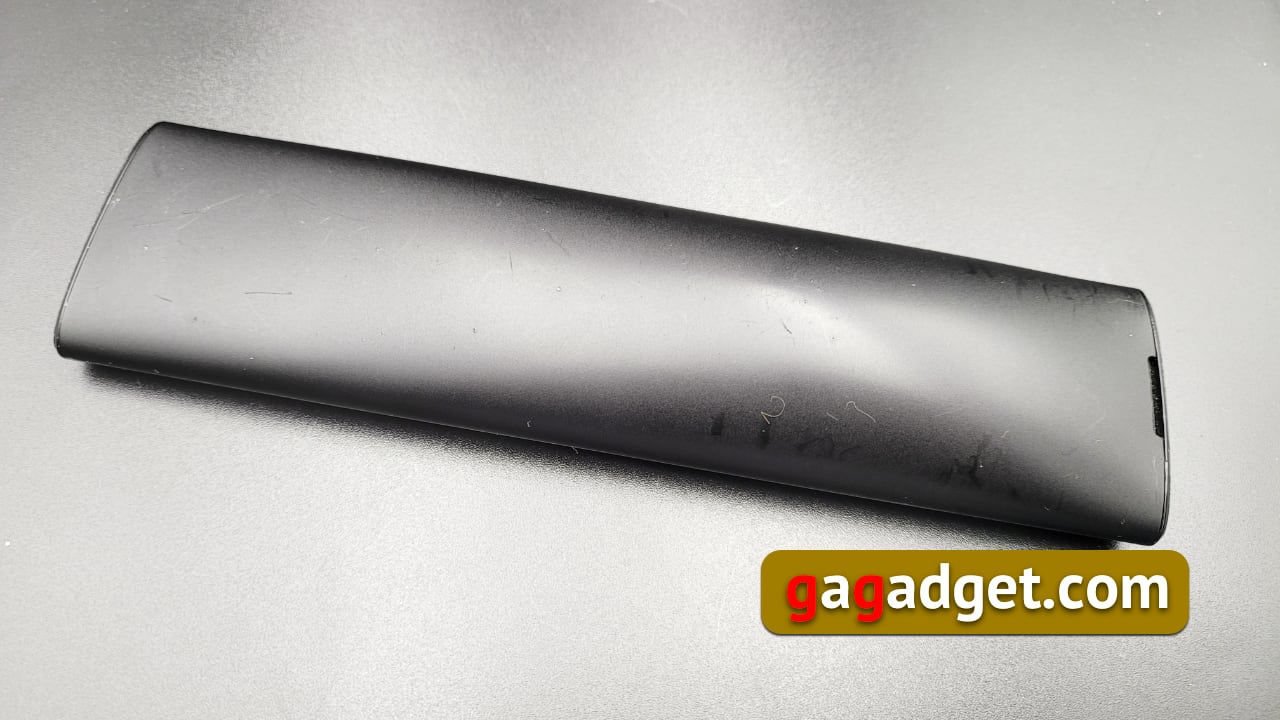
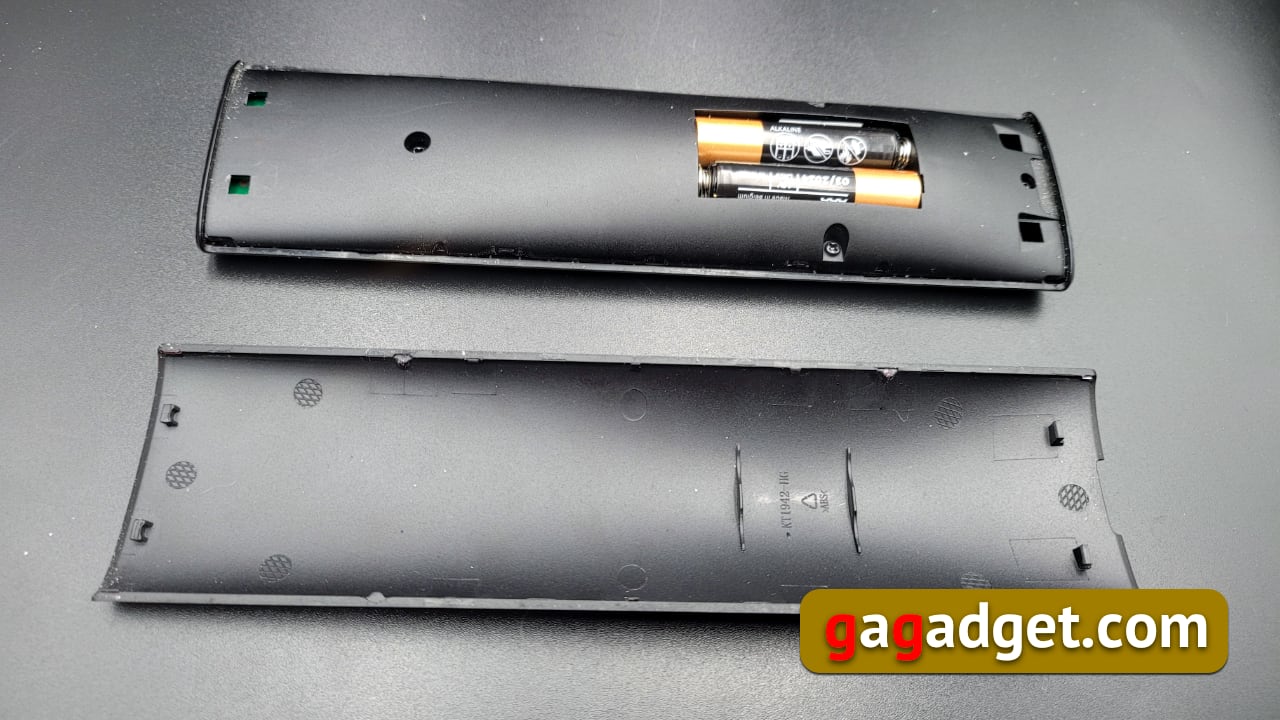
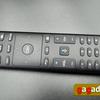
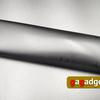
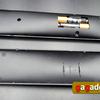
Three things you need to know about the KIVI 43U710KB TV
- It is a 4K TV with a 43-inch diagonal on the original Android TV 9 version with an upcoming upgrade to the 11th and all the advantages;
- Besides HDR it uses several algorithms to improve the image, has advanced picture correction capabilities and supports HDMI 2.1;
- It has best-in-class sound - calibrated speakers with tweeters, totaling 24 watts.
| Key Specifications KIVI 43U710KB TV | |
|---|---|
| Screen | 43", IPS, 4K (3840x2160), 16:9 aspect ratio, LED backlighting type |
| Dimensions (without stand) |
966x560x64 mm |
| Dimensions (with feet) |
966x622x231 mm |
| Weight | 7.5 kg / 7.7 kg with legs |
| Android Version | 9.0 Pie with upcoming update to 11 |
| Processor | A.C.E Pro Engine (MediaTek chipset) |
| Memory | 8GB storage, 1.5GB RAM |
| Communications | dual band Wi-Fi 802.11ac, Bluetooth |
| Connectors | CI, HDMI 2.1 x 4, USB 2.0 x 3, Ethernet, optical audio output, RCA composite input, 3. |
| 5 mm for headphones | Sound |
| 2 x 12 W, Dolby Digital, 5-band equalizer | Remote control |
| microphone for voice commands | Energy efficiency |
| Class A | Price |
9 999 UAH
- For those who want to know more
- Why you should buy Android TV
- What is interesting about KIVI 2020 Android TV
- TV Anatomy: everything you wanted to ask about modern TV technology
- How to choose a dream TV
